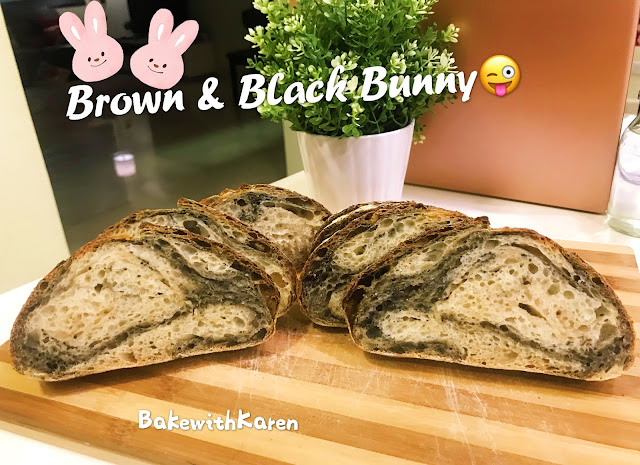Sourdough bread is made by the fermentation of the dough with naturally occurring wild yeast and lactobacilli without adding any commercial or baker’s yeast. And I really enjoy the taste and health benefits of naturally gluten free sourdough that without the chemicals and preservatives.💓
I think I've gain some development in sourdough making... particulary learning the different modes of the dough, which means when the dough is tightened, or when it is relaxed. 😊
This is a recipe for a non-fuss sourdough bread making. Basically, it's a no knead sourdough recipe. I manage grasp of baking theory and try to inventing sourdough recipes of my own! And I keep the bread baking as simple as possible. 😘
I skipped the long bulk fermentation at room temperature and straight to cold fermentation. After 12 hours-16 hours, I let it sit in room temperature to allow it to warm up enough to reactivate the yeast so it will finish my final proofing step. I shape my dough after 1 hour rest then put it in a banneton for 1 hour or so until it is ready to bake. After 1 hour I did the poke test. If it was still under proofed. I continued doing the poke test until it sprung back half way and then I got it ready to bake. 😉
Good fermentation, strong dough, the correct amount of bulk fermentation, good proofing are the steps needed to get a great loaf of sourdough bread. This may sound complex, but as you practice more and develop an understanding of how to execute these steps, you will taste the difference in every slice of bread.😊
- 1hr autolysis
- Divide dough~ small portion dough(170g) mixed with Black Sesame powder
- 2 x Stretch & fold~25mins interval (both dough)
- 1hr rest
- 1 x lamination (combine both doughs)~25mins rest
- 1 x bench light fold~25mins rest(2hrs&40mins bulk from Stretch and fold)
- 15 hrs cold retard
- 1 hr rest in room temperature
- Shape and 2nd proofing~1 hr rest
- 250C open bake with *steam for 20 mins
- 200C without *steam for 25 mins
- *steam~Roasting pan with hot water to create steam.
- During the cold fermatation, the dough seems very stiff and cold, the starter is in dormant stage! But, don't worry! Once you leave it in room temperature, the starter will activate again!
- Proofing bread overnight in the refrigerator since the cold slows down the rise. It has its benefits, including adding flavor and allowing you to bake the bread at a later time.
- To check the dough has proofed~ by*POKE TEST. If its underproofed, just proof for longer time before sending to oven.
- *POKE TEST~~ If: The dough pops back out quickly~ This means its under-proofed. The dough stays where it is ~This means its over-proofed. The dough pops back out slowly and leaves a slight indentation – Perfect, your dough is ready!
- The shaping in between your bulk fermentation and your final proof will give your bread structure, which is much more important to developing a good crumb of your dough. A good tight structure will allow your loaf to get an "oven spring" (the rapid expansion of the dough when you first put it in the oven) that is nice an even and leaves you with a consistent crumb ~ whether that crumb is tighter or looser.







Comments
Post a Comment